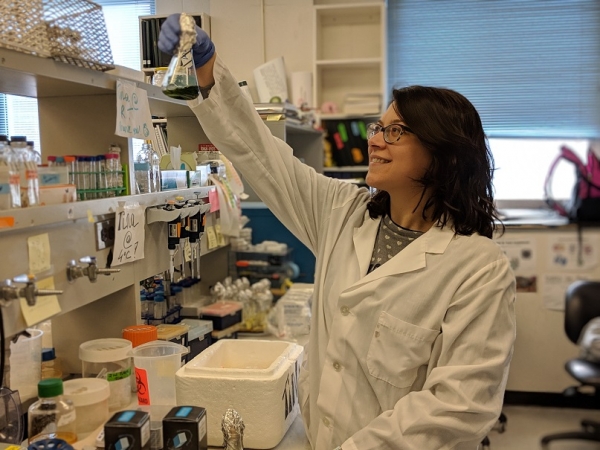In the past they were known as “blue-green algae”. But they are not really algae. Rather, they are a group of bacteria that carry out photosynthesis, which is precisely where their particularity and value lie, from the research point of view. They have a simpler structure than that of plants, and can be grown in a laboratory, which makes it possible to study photosynthetic mechanisms in a simpler way than in other living beings.
Cyanobacteria are the organisms that "invented" photosynthesis, and their "services" rendered to the planet include having been responsible for evolution on Earth. They were the first photosynthetic beings and, as such, increased the concentration of oxygen in the atmosphere, which was the origin of modern cells, and all the important evolutionary advances that came later.
In the 70s and 80s two specific genera of marine cyanobacteria –Synechococcus and Prochlorococcus– were discovered, which marked a turning point, disproving the idea that in the central areas of the oceans there were few microorganisms, due to the absence of nutrients. On the contrary, it was proved that these small photosynthetic beings were the main producers of organic matter on the entire planet.
Despite these findings, there are still certain issues to resolve with regards to these ancient inhabitants of the Earth. Clearing up some of these questions is, precisely, the goal of the Photo-cy-apps project, in which the University of Córdoba participates through the BIO-123 group.
According to one of the principal investigators on the project, Professor José Manuel García, the study, which will conclude in 2021, focuses specifically on the role played by OCPs: Orange Carotenoid Proteins. These are proteins that play a fundamental role in the defence mechanisms of these microorganisms under very bright conditions. When these bacteria are subjected to too much light energy, their structure runs the risk of being damaged. If this happens, these proteins intervene by dissipating the excess of solar energy, thereby preserving the integrity of their cells.
The study is currently in its first phase, in which the researcher María Agustina Domínguez is carrying out different structural tests with several groups of cyanobacteria at the University of Michigan. Subsequently, at the UCO, she will apply the new knowledge and combine it with the extensive experience that her research group has acquired over decades on the physiology of these microorganisms.
Knowing how these "photoprotective" proteins really work could have important implications. According to researcher José Manuel García, firstly, "from the point of view of basic science, it is important to know how these living beings protect themselves", since it could provide important clues about certain key metabolic pathways.
In addition, in a context in which climate change could increase solar radiation in certain areas of the Atlantic and the Pacific, understanding these defence mechanisms could help predict how cyanobacterial populations in the ocean are going to vary – very valuable information considering that these organisms are the main producers of organic matter on the planet.
Finally, the results could, conceivably, even have long-term applications in the treatment of certain eye diseases. The proteins present in the human eye use light to generate visual images, so they have a certain similarity to those involved in the photosynthesis process.


